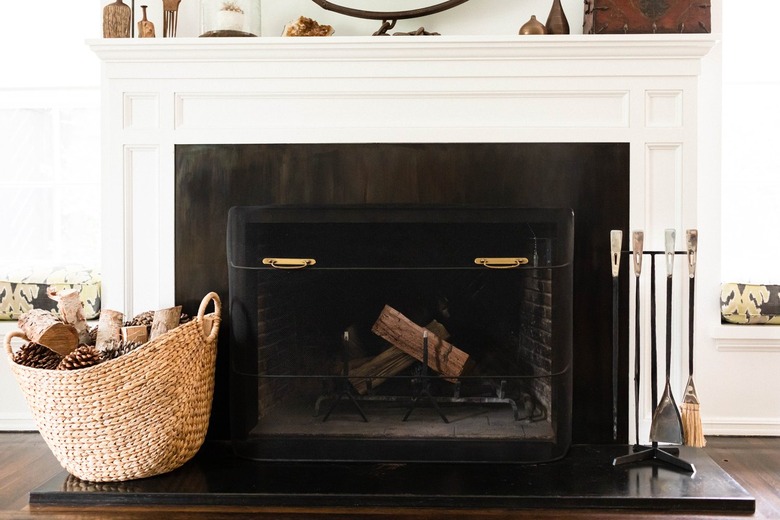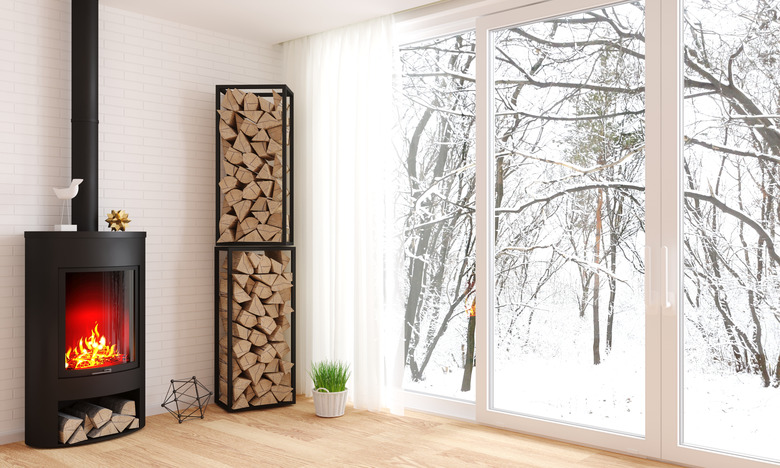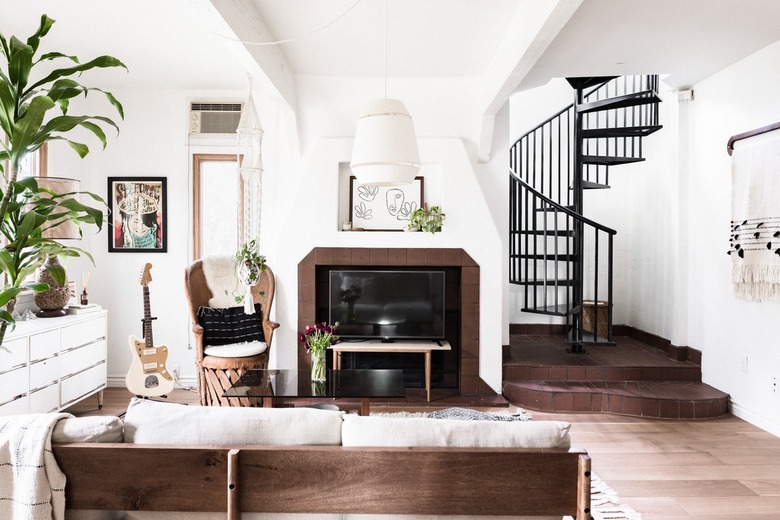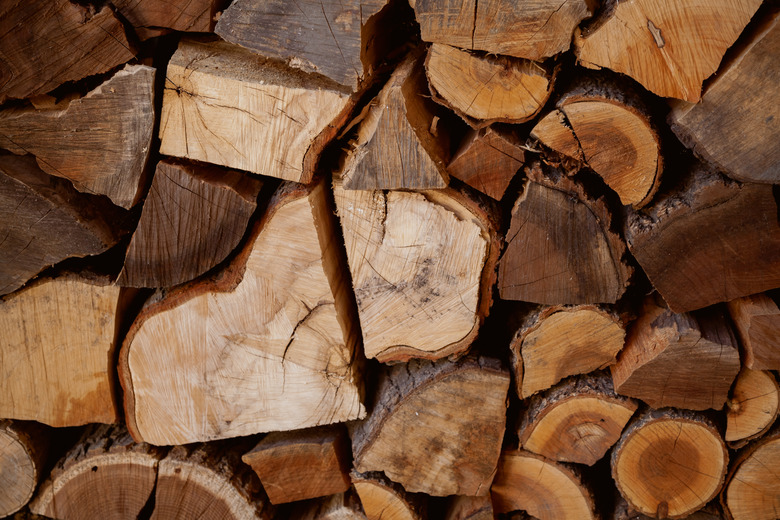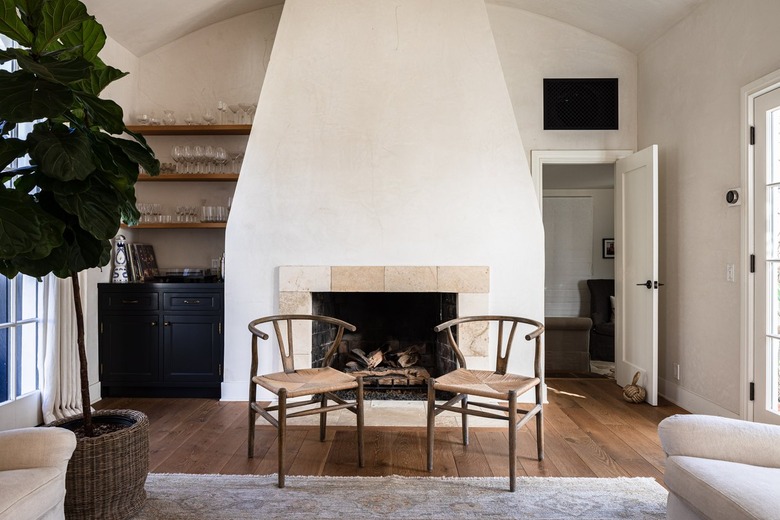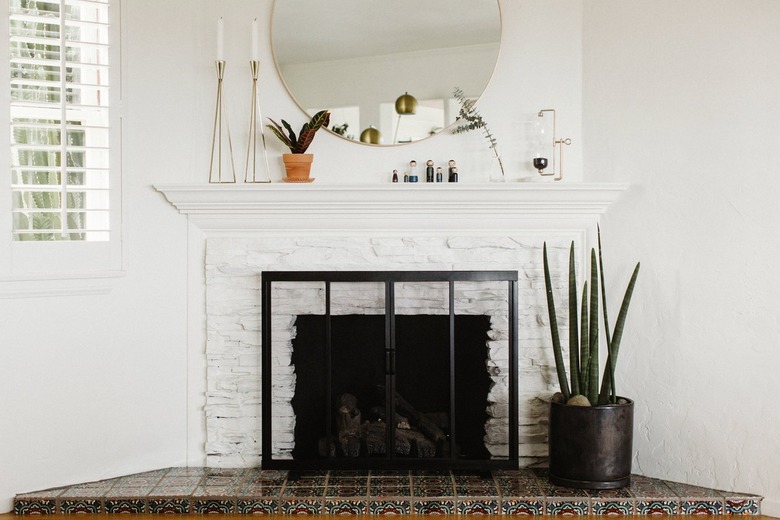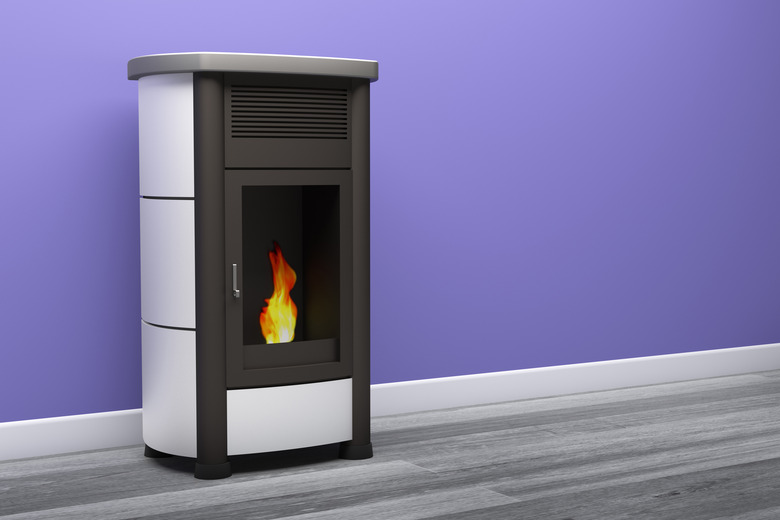Can You Heat A House With A Wood-Burning Stove?
We may receive a commission on purchases made from links.
No doubt about it, wood heat is comfortable. Plus, it comes from a renewable source unlike gas and electricity, which both rely on fossil fuels. Depending on where you live, using wood as a heat source can also be cheaper than either natural gas or propane. All of this may lead you to wonder whether heating your entire house with a wood-burning stove is a good idea.
Depending on the layout of your house, a wood-burning stove might be able to heat all of it. Ultimately, whether or not wood can heat your whole house depends on a few key factors, including your local climate and home's layout as well as the size and placement of the wood-burning stove. It's also important to keep in mind that maintaining a wood stove takes hard work.
Climate Considerations
Climate Considerations
Wood heating systems can be cozy and romantic, but it's not all positive — with a wood stove, you'll wake up in a cold house every morning and it will stay cold until you get the fire going. It could take an hour for the stove to generate enough heat to make you comfortable. That may not be a major issue if you live in a temperate climate, but it will quickly become one if the winters get cold in your area.
Also consider the trees that grow in your climate zone because they will determine the type of wood you can get. The best wood for burning is dense hardwood, such as oak or madrone, but hardwood supplies may be limited and expensive where you live. In that case, you might end up burning softwoods, like pine and fir, which burn hot and fast and generate more creosote. That means you'll be feeding the fire and cleaning buildup from the chimney and flue more often, and you'll need more wood to get you through the winter.
Think About the Layout of Your House
Think About the Layout of Your House
Heat rises, so if you have a multistory house, the best place for a wood stove is on the ground floor. With that placement, the wood stove heat is going to have a hard time finding its way into every nook and cranny of a home with a staircase and multiple upstairs bedrooms. Single-story homes with open floor plans are the best candidates for wood heat, but even then, you need a way to help the heat circulate to avoid needing backup heat in the rooms farthest from the heat source.
There are three circulation strategies you can try:
- Place a blower on the stove or underneath it. Some stoves come with built-in blowers, and you can also purchase a fan that sits on top of the stove and operates by heat convection.
- Install one or more ceiling fans to circulate hot air that collects near the ceiling. Get a ceiling fan compatible with Amazon Alexa or Google Home and you can simply tell the fan to come on when you need it.
- Install floor vents to help heat circulate in upper-story rooms.
Wood Heat Takes Work
Wood Heat Takes Work
Heating systems that rely on electricity or fossil fuels, like propane or natural gas, are basically plug and play: Just turn up the thermostat when you're cold and the system responds. Life isn't quite as straightforward when you have a wood-burning stove:
- You have to maintain the fire. When you go away for the day, the first order of business when you get home — even before you take off your coat — is to get the fire going.
- You need plenty of wood. You either need to have it trucked in and piled in a suitable place outdoors or you need to go out there with an axe and chainsaw and split your own.
- Some wood stoves are more clean burning than others, but all send greenhouse gases, including carbon dioxide, sulfur oxides, and nitrogen oxides, into the atmosphere.
- The stove has to be cleaned out periodically, and you need a plan for disposing of buckets full of sooty ash.
The Best Placement for Whole-House Heat
The Best Placement for Whole-House Heat
An existing fireplace seems like a great place to put a wood heating system because the energy efficiency of a fireplace or fireplace insert is only about 10 percent, while that of a wood stove can be as much as 70 or 80 percent. If the fireplace is located next to an external wall, though, much of the heat generated by the stove will be lost through the wall, effectively reducing the heating efficiency.
On the other hand, a fireplace or firebox situated in the center of the living room or dining room is a great location for a whole-house wood stove. Even without the fireplace, a central location on the ground floor is best for the stove because it allows heat to radiate in all directions.
Sizing the Wood Stove
Sizing the Wood Stove
Wood stoves are sized by the amount of heat they generate, as measured in BTUs (British thermal units), where one BTU is the amount of heat needed to raise 1 pound of water by 1 degree Fahrenheit. Since wood stoves are sized for heating individual rooms, you'll want the largest one you can find to heat the whole house, but this creates a potential problem.
To avoid making the room in which the stove is situated uncomfortably warm, you may find it necessary to operate it at a lower temperature than that for which it's designed, and instead of burning, the wood will smolder and create more creosote buildup in the flue. This is preferable, however, to overfiring a smaller stove (opening the flue to admit more air) to make it burn hotter, which can damage the stove. It's better to go big and risk being too warm than it is to go small and risk damaging your stove.
Wood-Burning Alternatives
Wood-Burning Alternatives
If your main concern is the impact of fossil fuel emissions on the environment, you won't score any points by using a wood stove that belches smoke into the atmosphere. You might score more points by installing a high-efficiency wood-burning boiler, which has a second combustion chamber. In that chamber, combustion gases from the first chamber collect and undergo a second combustion process that releases more heat and produces fewer emissions. Instead of radiating the heat throughout the house, the stove heats water that is then circulated throughout a hydronic heating system consisting of baseboard heaters or radiators.
A pellet stove is another alternative to a freestanding wood-burning stove. The pellets it burns are made from recycled materials, and the burn process is cleaner and more controlled. In fact, the Environmental Protection Agency rates pellet stoves as among the cleanest-burning heating appliances available. The problem of radiating the heat through an entire house remains, however, and you'd have to resort to blowers or fans. And for a large house with multiple rooms, you'd need a backup heat source for rooms far from the stove.
